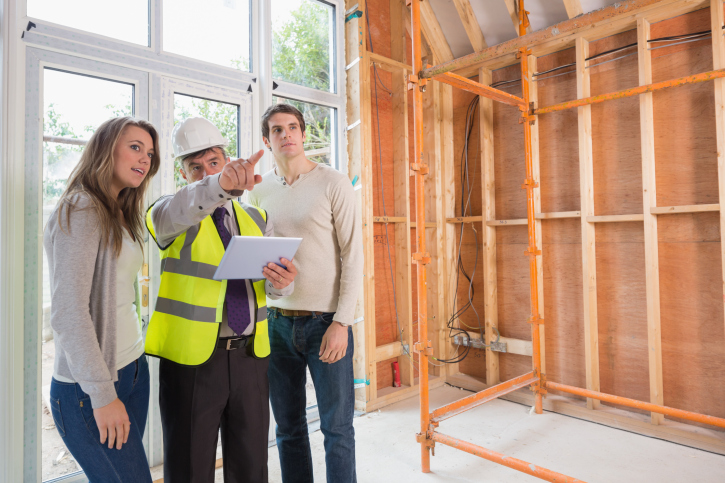Building a Sustainable Future: Using Construction Loans to Incorporate Green Building Practices
 Environmental consciousness is increasingly becoming a priority, and the construction industry stands at the forefront of sustainable innovation. One avenue gaining traction is the use of construction loans to incorporate green building practices, particularly in the construction of sustainable homes. These loans offer an opportunity not only to build structurally sound residences but also to minimize environmental impact and promote long-term sustainability.
Environmental consciousness is increasingly becoming a priority, and the construction industry stands at the forefront of sustainable innovation. One avenue gaining traction is the use of construction loans to incorporate green building practices, particularly in the construction of sustainable homes. These loans offer an opportunity not only to build structurally sound residences but also to minimize environmental impact and promote long-term sustainability.
Understanding Construction Loans
Construction loans provide funding for the building or renovation of a property. Unlike traditional mortgages, which are based on the appraised value of a completed home, construction loans disburse funds in stages as the project progresses. This incremental disbursement allows borrowers to manage costs and ensures that funds are allocated efficiently throughout the construction process.
Embracing Green Building Practices
Integrating green building practices into construction projects involves implementing design, construction, and operational practices that significantly reduce or eliminate the negative impact of buildings on the environment and occupants. From energy efficiency and water conservation to sustainable materials and indoor air quality, green building encompasses a wide range of strategies aimed at minimizing resource consumption and maximizing environmental performance.
Environmental Sustainability: Green buildings reduce carbon emissions, conserve natural resources, and promote biodiversity, contributing to a healthier planet and mitigating climate change.
Cost Savings: While upfront costs may be slightly higher, green building practices often result in long-term savings through reduced utility bills, lower maintenance costs, and increased property value.
Health and Well-being: Sustainable homes offer improved indoor air quality, natural lighting, and thermal comfort, fostering healthier and more comfortable living environments for occupants.
Leveraging Construction Loans for Sustainability
When considering a construction loan for a sustainable home, borrowers have the opportunity to allocate funds towards green building features and technologies. These may include:
Energy-Efficient Appliances and Systems: Investing in energy-efficient heating, ventilation, and air conditioning (HVAC) systems, as well as ENERGY STAR-rated appliances, can significantly reduce energy consumption and utility costs.
Renewable Energy Sources: Integrating solar panels, wind turbines, or geothermal systems into the home’s design allows for the generation of clean, renewable energy, further reducing reliance on fossil fuels.
High-Performance Insulation and Windows: Proper insulation and high-performance windows help regulate indoor temperatures, minimize heat loss or gain, and enhance overall energy efficiency.
Water-Efficient Fixtures and Landscaping: Installing low-flow plumbing fixtures, rainwater harvesting systems, and drought-resistant landscaping reduces water consumption and promotes sustainable water management practices.
Incorporating green building practices into construction projects not only aligns with environmental stewardship but also presents financial and health-related benefits for homeowners. By leveraging construction loans to prioritize sustainability, individuals can play a pivotal role in fostering a more sustainable future while enjoying the numerous advantages of eco-friendly living. As the demand for sustainable housing continues to rise, embracing green building practices represents a prudent investment in both the present and the generations to come.

 Embarking on a home construction project is an exciting journey that can lead to your dream home becoming a reality. However, the financial aspects of building a home can be challenging to navigate. This is where construction-to-permanent loans come into play. These unique financing options offer a range of benefits that can make the construction process more manageable and affordable. We will discuss the advantages of construction-to-permanent loans and how they can benefit homeowners.
Embarking on a home construction project is an exciting journey that can lead to your dream home becoming a reality. However, the financial aspects of building a home can be challenging to navigate. This is where construction-to-permanent loans come into play. These unique financing options offer a range of benefits that can make the construction process more manageable and affordable. We will discuss the advantages of construction-to-permanent loans and how they can benefit homeowners. Embarking on a construction project entails countless challenges, and managing the associated budget is a crucial task. A well-planned and meticulously monitored budget ensures the project’s success without financial hiccups. Here’s a comprehensive guide on effectively managing a construction loan budget.
Embarking on a construction project entails countless challenges, and managing the associated budget is a crucial task. A well-planned and meticulously monitored budget ensures the project’s success without financial hiccups. Here’s a comprehensive guide on effectively managing a construction loan budget. Creating a backyard oasis with a swimming pool, hot tub, or water feature can transform your outdoor space into a haven for relaxation and entertainment. However, financing such a project often involves careful planning and consideration. One popular financial option for these endeavors is a construction loan.
Creating a backyard oasis with a swimming pool, hot tub, or water feature can transform your outdoor space into a haven for relaxation and entertainment. However, financing such a project often involves careful planning and consideration. One popular financial option for these endeavors is a construction loan. If you are thinking about building your own home, you might be wondering how construction loans work. There are plenty of options available, but one of the most popular choices is a single-close construction loan. This type of loan allows you to close on not only the construction expenses but also your financing costs at the same time. Essentially, a single-close construction loan will convert into your mortgage after the construction on your home is finished. What are some of the top benefits of this type of loan?
If you are thinking about building your own home, you might be wondering how construction loans work. There are plenty of options available, but one of the most popular choices is a single-close construction loan. This type of loan allows you to close on not only the construction expenses but also your financing costs at the same time. Essentially, a single-close construction loan will convert into your mortgage after the construction on your home is finished. What are some of the top benefits of this type of loan?